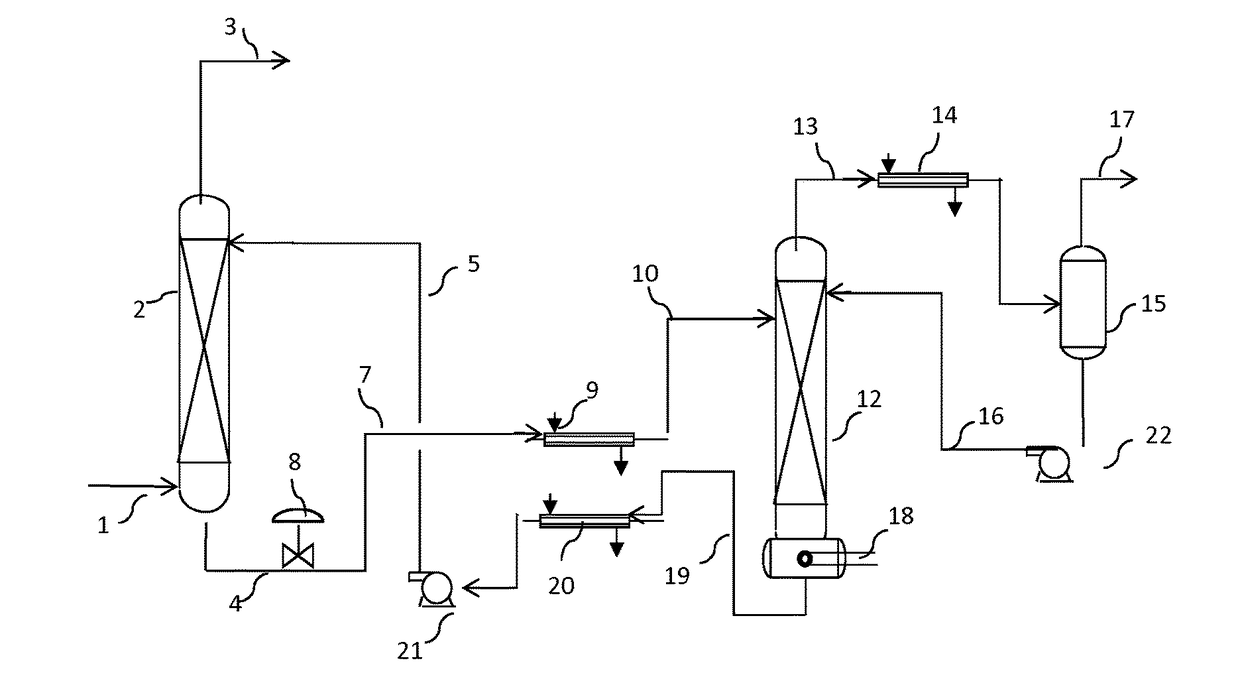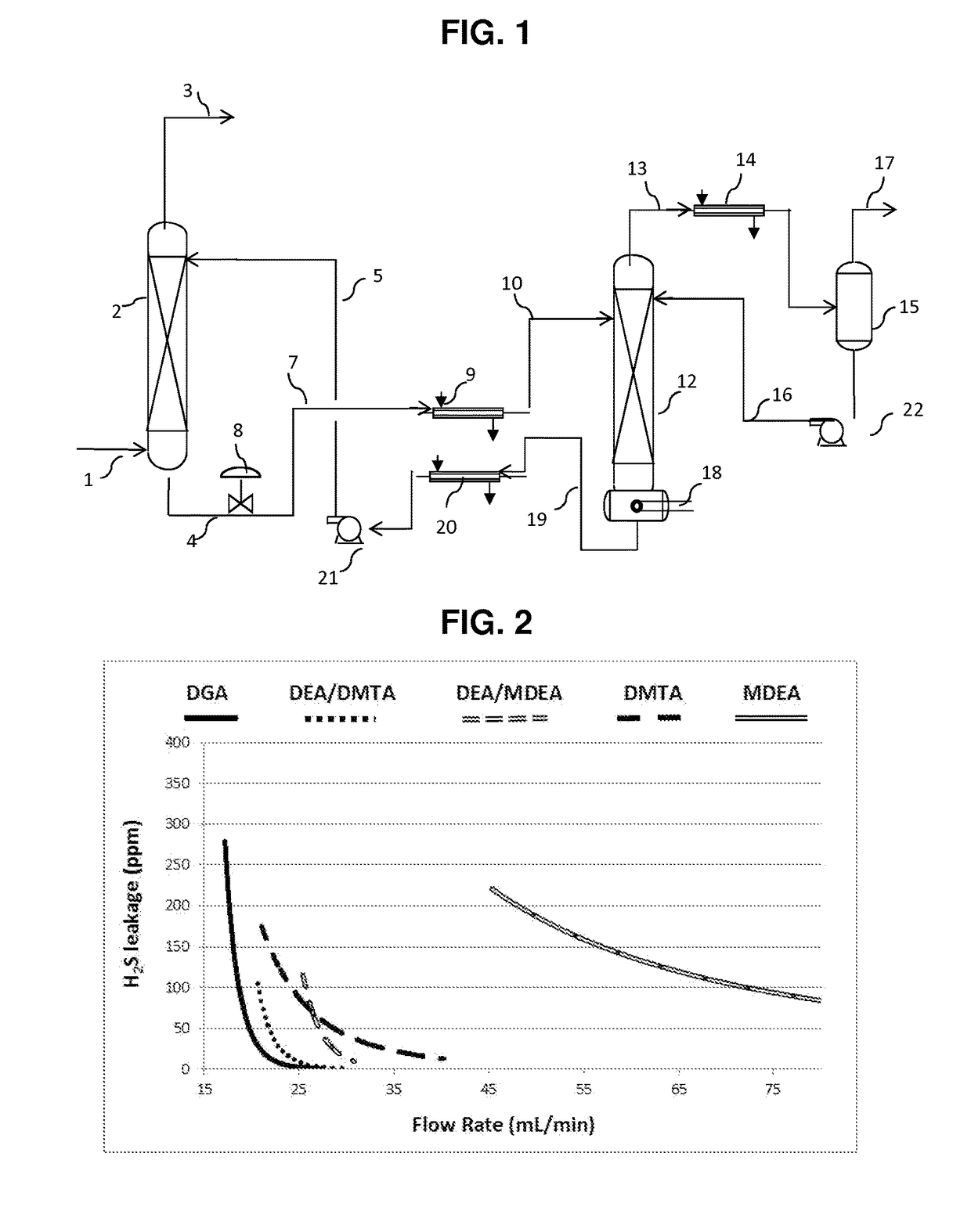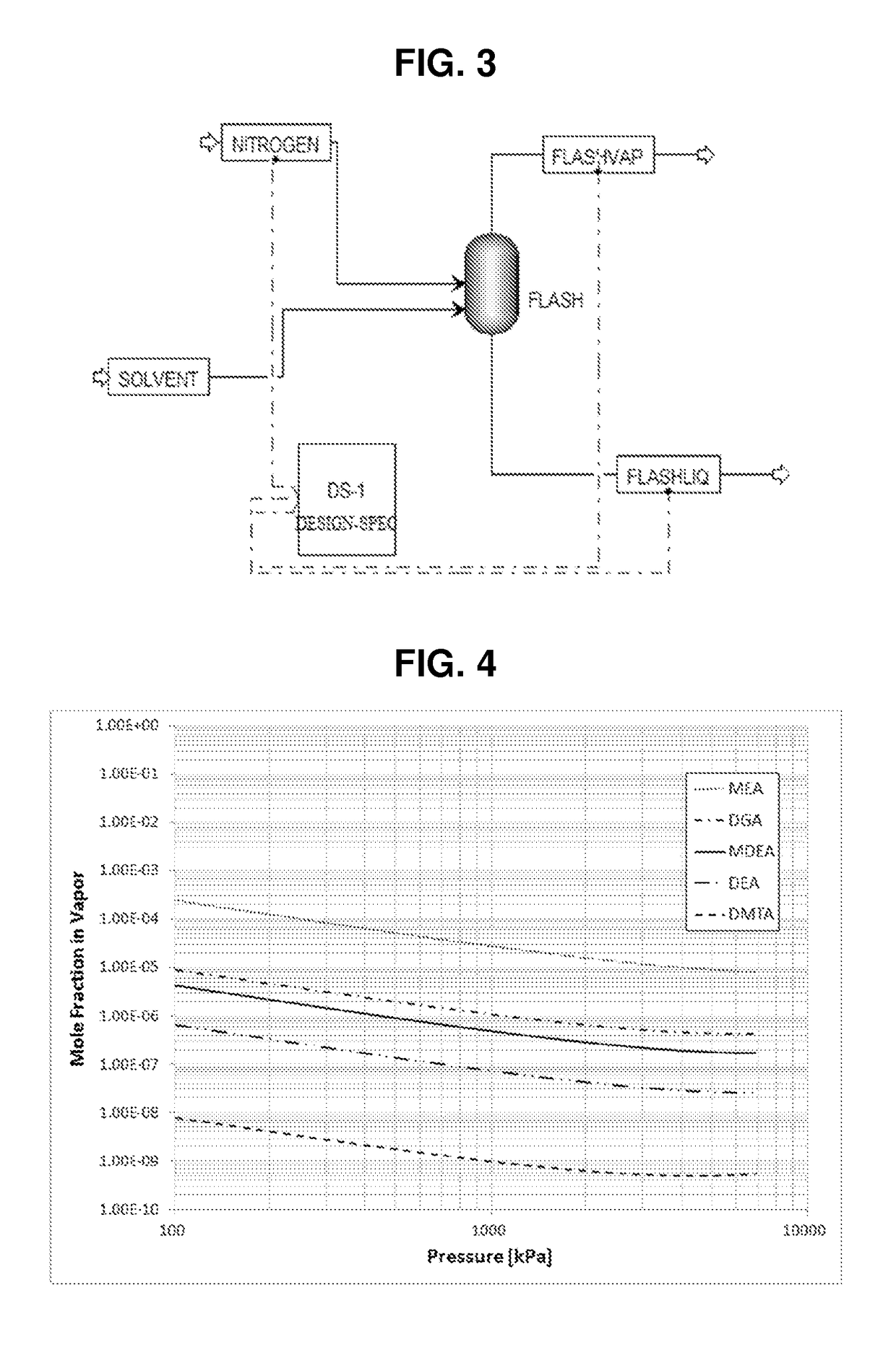Process for the removal of acid gases from gaseous mixtures using an aqueous solution of 2-dimethylamino-2-hydroxymethyl-1, 3-propanediol
a technology of acid gas removal and aqueous solution, which is applied in the field of composition, can solve the problems of loss of amine due to volatility, loss of amine due to solubility, and the inability to achieve the low volatility desired for gas-liquid separation of amines, etc., and achieve the effect of reducing loss
- Summary
- Abstract
- Description
- Claims
- Application Information
AI Technical Summary
Benefits of technology
Problems solved by technology
Method used
Image
Examples
examples
[0049]Examples 1 to 15 are an aqueous amine absorbent solution comprising 50 parts by weight of one or more alkanolamine, 50 parts by weight deionized water, and optionally 1 part by weight of an acid, parts by weight are based on the total weight of the aqueous amine absorbent solution. A gas stream comprising a synthetic mixture containing 5 percent H2S, 2 percent CO2 and 93 percent N2, wherein percent is percent by volume, is treated in a pilot scale absorber to remove the H2S and CO2. For each aqueous amine absorbent solution, the gas stream is treated at three different flow rates.
[0050]Physical characteristics for the alkanolamines used in the examples are listed in Table 1.
TABLE 1MEADGAMDEADEADMTApKa9.59.48.78.99.1Relative solubility in0.060.210.0010.008heptaneBoiling point, ° F.171221247268335
[0051]The compositions, process parameters, and residual H2S and CO2 levels for Examples 1 to 15 are listed in Table 2. In Table 2:
[0052]“MEA” is 98% monoethanolamine available from The...
PUM
| Property | Measurement | Unit |
|---|---|---|
| Temperature | aaaaa | aaaaa |
| Percent by mass | aaaaa | aaaaa |
| Percent by mass | aaaaa | aaaaa |
Abstract
Description
Claims
Application Information
 Login to View More
Login to View More - R&D
- Intellectual Property
- Life Sciences
- Materials
- Tech Scout
- Unparalleled Data Quality
- Higher Quality Content
- 60% Fewer Hallucinations
Browse by: Latest US Patents, China's latest patents, Technical Efficacy Thesaurus, Application Domain, Technology Topic, Popular Technical Reports.
© 2025 PatSnap. All rights reserved.Legal|Privacy policy|Modern Slavery Act Transparency Statement|Sitemap|About US| Contact US: help@patsnap.com



